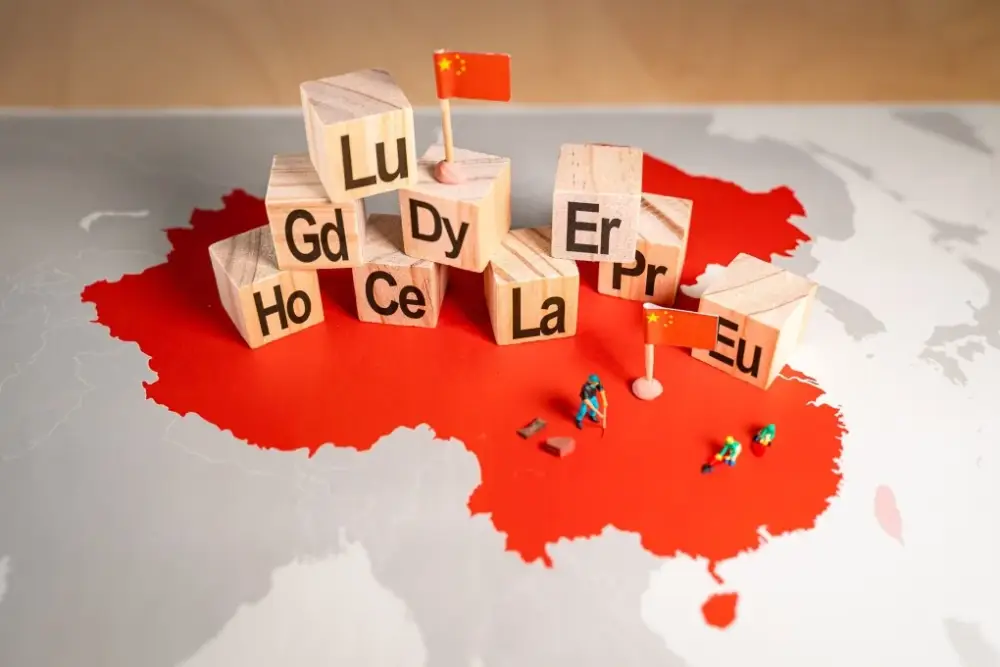
Trung Quốc vẫn giữ thế thượng phong đất hiếm: Mỹ chậm chân, trả giá vì bỏ lỡ đầu tư chiến lược
-
Theo báo cáo từ tổ chức tư vấn Strategy Risks (New York), Trung Quốc sẽ tiếp tục giữ lợi thế chiến lược trong ngành đất hiếm, bất chấp nỗ lực gần đây của Mỹ nhằm thu hẹp khoảng cách.
-
Bắc Kinh hưởng lợi từ chiến lược đầu tư dài hạn vào công nghệ khai thác và xử lý tiên tiến. Từ năm 2015, Trung Quốc đã phát triển công nghệ tự động hóa khai thác nhằm giảm phụ thuộc lao động, đồng thời triển khai công nghệ chiết xuất lithium thông minh tại nước ngoài như Argentina.
-
Trong khi đó, Mỹ vẫn phụ thuộc vào đất hiếm nhập khẩu từ Trung Quốc do thiếu trữ lượng nội địa, đầu tư thấp và chính sách không đồng bộ. Các doanh nghiệp Mỹ chủ yếu tập trung nâng cấp mô-đun trên hệ thống cũ thay vì đầu tư mới.
-
Trung Quốc khai thác khoảng 70% đất hiếm toàn cầu, nhưng đặc biệt chiếm hơn 90% năng lực tách và xử lý đất hiếm nặng – những nguyên tố thiết yếu cho thiết bị quân sự, EV và công nghệ cao.
-
Trong các cuộc đàm phán thương mại mới đây giữa chính quyền Trump và Trung Quốc, đất hiếm trở thành lá bài mặc cả quyền lực của Bắc Kinh để đáp trả các hạn chế công nghệ từ Washington.
-
Bắc Kinh còn tích hợp ngành đất hiếm với mục tiêu khí hậu, bao gồm hệ thống tái chế pin quốc gia nhằm đạt đỉnh CO₂ năm 2030 và trung hòa carbon vào 2060.
-
Trung Quốc dự kiến có 400 triệu tấn pin xe điện hết hạn vào năm 2028, và thị trường tái chế pin có thể đạt 280 tỷ nhân dân tệ (39 tỷ USD) – mở ra ngành công nghiệp mới trong lĩnh vực khoáng sản thứ cấp.
-
Báo cáo kết luận rằng Mỹ cần đầu tư có mục tiêu hơn: tăng khai thác, nâng cao công nghệ xử lý, sử dụng AI trong khai khoáng và mở rộng sản xuất – tái chế pin trong nước để giảm phụ thuộc vào Trung Quốc.
📌 Trung Quốc vẫn duy trì vị thế thống trị đất hiếm nhờ chiến lược dài hạn, công nghệ tự động hóa và tích hợp với mục tiêu môi trường. Trong khi đó, Mỹ loay hoay với đầu tư nhỏ giọt, thiếu cơ sở hạ tầng và trữ lượng. Với 90% năng lực xử lý đất hiếm nặng và thị trường tái chế pin 39 tỷ USD vào 2028, Trung Quốc tiếp tục tạo khoảng cách, buộc Mỹ phải hành động chiến lược nếu không muốn tụt lại phía sau.
https://www.scmp.com/economy/china-economy/article/3317546/chinas-rare-earth-dominance-continue-us-investment-lags-analysts
China’s rare earth dominance to continue as US investment lags: analysts
Thảo luận
Follow Us
Tin phổ biến



